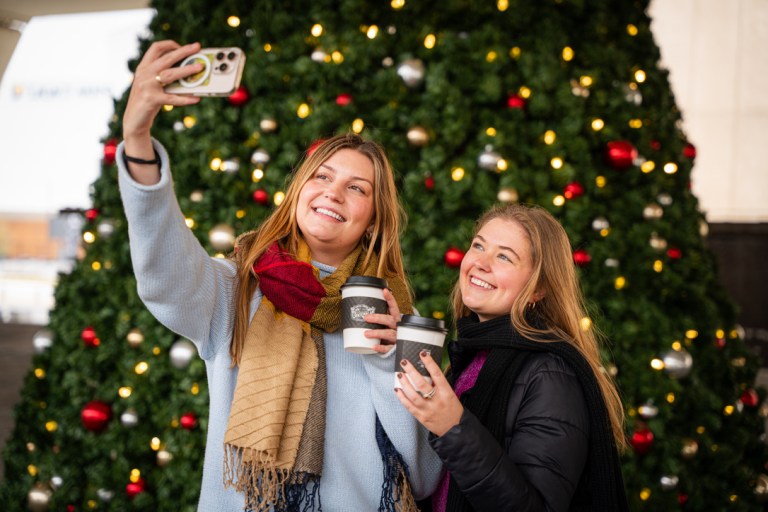Reviewed by: Pat Byington
Learn about Birmingham’s historic houses of worship at “Sacred Spaces, Civic Places, and the Building of a Magic City,” Feb 27
Reading time: 5 minutes

YOU are invited to hear from special panelists and congregation leaders on the history of Birmingham’s earliest houses of worship. Sacred Spaces, Civic Places, and the Building of a Magic City is free and open to the public, and will be held at First United Methodist Church on Sunday, February 27th from 3PM to 4:30PM. Keep reading to learn more!
Celebrating 150 Years of Religious and Civic Growth in Birmingham — A Panel Discussion

On December 19th, 1871, the City of Birmingham was incorporated in Jones Valley, an area of farmland owned by the Elyton Land Company that would soon be a hub to two major railroads. In Birmingham, dreams for a thriving industrial city were made a reality due to the abundance of coal, iron ore and limestone—all the ingredients needed to make iron. As people flocked to the growing Southern city in search of new opportunities, they began forming congregations for worship.
- 1869 — An African-American Methodist congregation—St. Paul United Methodist Church—began meeting in tents.
- 1872 — The Elyton Land Company gave land grants to five white congregants of major denominations—Catholic, Presbyterian, Episcopalian, United Methodist and Baptist—in order to establish houses of worship in the fledgling city.
- 1873 — Birmingham’s first Black Baptist church, the Sixteenth Street Baptist Church, was established in downtown—also on land granted by the Elyton Land Company.
- 1882 — The city’s growing Jewish community established their first temple, Temple Emanu-El, in Birmingham.

These eight congregations—St. Paul United Methodist, Sixteenth Street Baptist, Temple Emanu-El, First Presbyterian, Cathedral Church of the Advent, First Methodist, St. Paul’s Cathedral and First Baptist—comprise Birmingham’s earliest houses of worship and are still thriving to this day.
“The 150th year of our churches’ founding gives all of us in Birmingham another chance to discover the value in our differences, the joy of our uniquenesses and the glory of being the same.”
Theodore (Ted) Debro, Chair, Board of Trustees, Sixteenth Street Baptist Church
What to Expect at “Sacred Spaces, Civic Places, and the Building of a Magic City”

- What: “Sacred Spaces, Civic Places, and the Building of a Magic City” — A panel discussion about Birmingham’s earliest houses of worship & their significance in the history of The Magic City
- When: February 27th, 2022 from 3:00PM to 4:30PM
- Where: First United Methodist Church Sanctuary, 518 19th Street North, Birmingham AL 35203
At Sacred Spaces, Civic Places, and the Building of a Magic City,” attendees will learn about the intertwined history of worship and civic growth in Birmingham from three expert panelists:
- Pamela Sterne King, Assistant Professor of History and Historic Preservation, UAB Dept of History (retired)
- Jim Baggett, Head of the Birmingham Public Library Department of Archives & Manuscripts
- Barry McNealy, Historical Content Expert, Birmingham Civil Rights Institute & Sixteenth Street Baptist Church Historian
“Birmingham’s 150th Anniversary celebrations urge us to look back to the Magic City’s relentlessly ambitious founding and to wrestle with its motivations, passions, contradictions and circumstances. The “Sacred Spaces, Civic Places, and the Building of the Magic City” panel will look at why the 1871 founders put numerous White and Black congregations on their original development maps. Did they bank on their building architectural monuments, making spiritual investment or serving as Civic partners? Conversely, how did Birmingham congregations see themselves and what visions did they plan to realize? This panel will explore the interesting and vital partnership between Birmingham’s founders and the role of religion in their vision.”
Pamela Sterne King, Assistant Professor of History and Historic Preservation, UAB Dept of History (retired)
In addition, the panel will give time to representatives of each of the eight congregations to speak on their history in The Magic City:
- St. Paul United Methodist Church, 1869
- First United Methodist Church, 1872
- Cathedral Church of the Advent, 1872
- First Presbyterian Church, 1872
- The Cathedral of St Paul, 1872
- First Baptist Church, 1872
- Sixteenth Street Baptist Church, 1873
- Temple Emanu-El, 1882
“Sixteenth Street Baptist Church was the first Colored Baptist Church in downtown Birmingham, organized in 1873—two years after the founding of the City of Birmingham. The church had several locations, places that were not appropriate for a church of color in those early years. These locations were condemned by the city, so the church moved and built a brick structure in 1884 on the corner of 6th Avenue North and Sixteenth Street. The church was key in the development of Birmingham’s ‘colored society’ and well-being. The church started schools, the Alabama Penny Savings Bank, the first Missions for Colored, the Bible College, concerts, lectures and colored dignitaries were presented in the first Colored Baptist Church of Birmingham. The current edifice was built in 1911, designed by one of the first African American Architects, Wallace A. Rayfield.”
Theodore (Ted) Debro, Chair, Board of Trustees, Sixteenth Street Baptist Church
Sacred Spaces, Civic Places, and the Building of a Magic City is free and open to the public, and childcare will be available.
Planning to attend Sacred Spaces, Civic Places, and the Building of a Magic City? Tag us @bhamnow to let us know!



